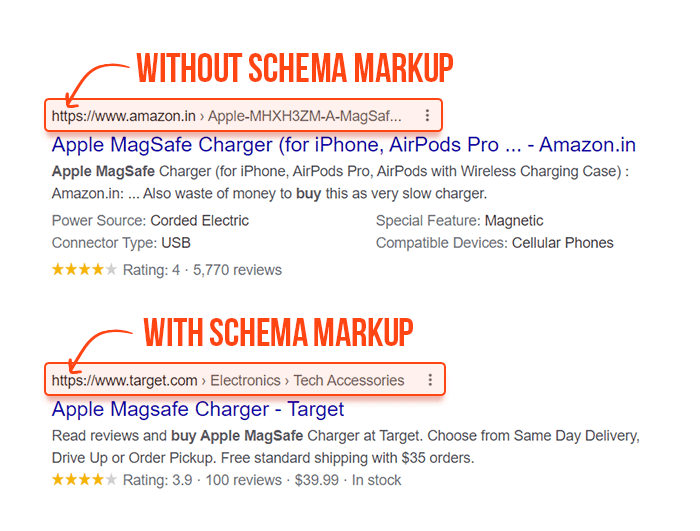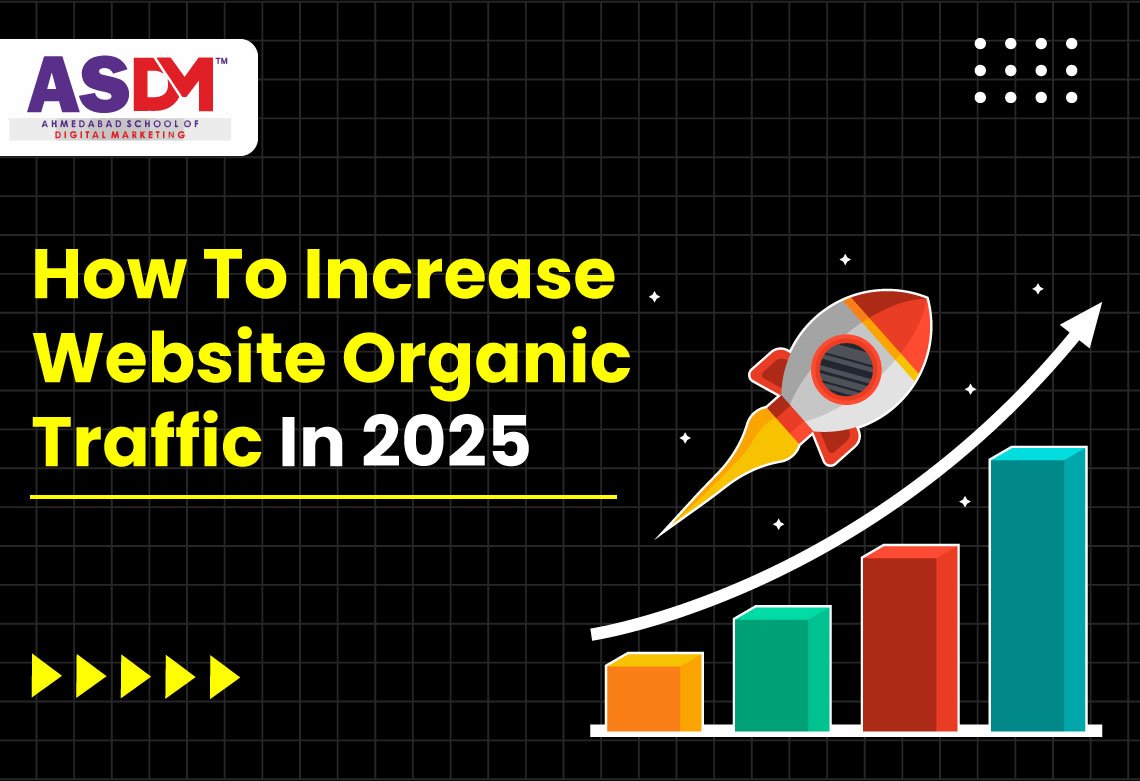The importance of organic traffic has grown alongside the evolution of search engine algorithms. Search engines, particularly Google, continue to emphasize quality, relevance, and user experience. For 2025, the focus is on delivering content that not only matches user intent but also adheres to Google’s EEAT (Experience, Expertise, Authority, and Trustworthiness) guidelines. These principles ensure that your website provides real value to its audience, increasing the chances of ranking higher on search engine results pages (SERPs).
The SEO landscape, however, is in constant flux. Trends like AI-driven keyword research, voice search optimization, and core web vitals are reshaping the way websites approach organic traffic growth. Staying updated with these changes is not optional; it’s a necessity. Websites that fail to adapt risk falling behind their competitors and losing valuable traffic. By understanding and embracing these shifts, businesses can not only keep up but also get ahead in the race for online visibility.
This blog outlines actionable tricks that can help you navigate the complexities of SEO in 2025. From enhancing user experience and leveraging content clusters to optimizing for local searches and repurposing old content, these strategies are designed to drive sustainable growth. Implementing them effectively can help you build a robust online presence and consistently attract your target audience, paving the way for digital success in 2025.
1. Focus on Core Web Vitals for a Stellar User Experience
In 2025, the importance of Core Web Vitals in driving website organic traffic cannot be overstated. These metrics, introduced by Google, serve as a cornerstone for evaluating user experience and play a pivotal role in determining your website’s search engine ranking. Optimizing for Core Web Vitals ensures your website is not just user-friendly but also search-engine-friendly, aligning perfectly with Google’s focus on delivering high-quality, reliable, and engaging content.
At the heart of Core Web Vitals are three key metrics: page speed (Largest Contentful Paint – LCP), interactivity (First Input Delay – FID), and visual stability (Cumulative Layout Shift – CLS). These elements work together to create a seamless browsing experience for users, directly impacting their engagement and retention.
- Page Speed (LCP): Fast-loading pages are essential for capturing and retaining users. A slow website can frustrate visitors, leading to higher bounce rates and lower conversions. Ensuring your largest visible content loads within 2.5 seconds or less is critical for maintaining user satisfaction and improving rankings.
- Interactivity (FID): First Input Delay measures how quickly your website responds to user interactions, such as clicking a button or filling out a form. Reducing delays enhances the user experience, making your website more intuitive and reliable.
- Visual Stability (CLS): Nothing annoys users more than unexpected layout shifts while they are interacting with a page. Maintaining a CLS score of less than 0.1 ensures that your website provides a smooth and visually predictable experience.
By prioritizing Core Web Vitals, you create a foundation for a stellar user experience, which directly correlates with higher engagement and better search engine rankings. Incorporating these optimizations into your SEO strategy will not only improve your website’s performance but also solidify its credibility and authority in the competitive digital landscape of 2025.

2. Optimize for Voice Search Queries
Voice search is no longer a futuristic trend—it’s a critical component of SEO strategy in 2025. With the increasing adoption of virtual assistants like Siri, Alexa, and Google Assistant, voice search is transforming how users interact with search engines. To capitalize on this growing trend and drive organic traffic, businesses must optimize their websites for voice search queries. The key lies in leveraging long-tail keywords and crafting conversational content that aligns with the way people naturally speak.
Why Long-Tail Keywords Are Essential
Voice search queries are often longer and more specific than traditional typed searches. For example, instead of typing “best coffee shops,” a user might say, “What are the best coffee shops near me that serve lattes?” This shift makes long-tail keywords—phrases that are more detailed and less competitive—essential for ranking in voice search results. By integrating these keywords into your content, you can better address user intent and capture highly targeted traffic.
Long-tail keywords also increase your chances of appearing in featured snippets, which are frequently read aloud by virtual assistants in response to voice queries. Optimizing your content with natural, question-based phrases like “How to,” “What is,” or “Best ways to” improves your visibility and engagement.

The Power of Conversational Content
By combining long-tail keywords and conversational content, you can create a voice search-optimized website that ranks higher, captures organic traffic, and delivers a seamless experience for users relying on voice-enabled devices. As voice search continues to dominate, adapting your SEO strategy to this evolving behavior is crucial for staying competitive in 2025.
3. Leverage AI Tools for Enhanced Keyword Research
In 2025, AI-driven tools have revolutionized keyword research, making it smarter, faster, and more effective than ever before. These tools harness the power of artificial intelligence to analyze massive datasets, uncover hidden opportunities, and deliver actionable insights for crafting a winning SEO strategy. By leveraging AI for keyword research, businesses can stay ahead of the competition and align their content with user intent more effectively.
Why AI-Driven Tools Are Game-Changers for SEO
Traditional keyword research methods, while still valuable, can be time-consuming and limited in scope. AI tools like Google’s Keyword Planner, SEMrush, Ahrefs, and Surfer SEO go beyond basic search volume and competition metrics. They use advanced algorithms to predict trends, identify semantically related terms, and understand search intent at a granular level.
AI-powered tools also excel at processing contextual data. They can identify patterns in how users phrase queries, allowing businesses to optimize for long-tail keywords, voice search queries, and questions-based searches that are increasingly common in 2025. This deeper understanding of search behavior empowers content creators to deliver value-driven content that resonates with their target audience.
Refining SEO Strategies with AI
One of the most significant advantages of AI tools is their ability to adapt to changes in search engine algorithms. With real-time updates and predictive analysis, these tools ensure your strategy remains aligned with the latest SEO trends, such as Google’s EEAT (Experience, Expertise, Authority, Trustworthiness) guidelines.
Additionally, AI simplifies the creation of content clusters, suggesting topics and subtopics that improve internal linking and semantic relevance. These clusters not only improve rankings but also enhance user experience by answering multiple related queries on a single website.
By incorporating AI into your keyword research process, you can uncover new growth opportunities, optimize your content for better rankings, and consistently refine your SEO strategy for long-term success. As AI continues to shape the digital landscape, it’s a must-have tool for businesses looking to dominate organic search in 2025.
4. Create Hyper-Relevant Content Clusters
In 2025, content clusters have emerged as one of the most effective strategies for optimizing your website for semantic SEO. This approach focuses on creating interconnected pieces of content that revolve around a central topic, known as the pillar page, and supporting it with detailed subtopics, or cluster content. This method not only improves website structure but also signals to search engines that your site provides comprehensive coverage of a subject, boosting your authority and rankings.
What Are Pillar Pages?
A pillar page is a broad, authoritative piece of content that serves as the foundation for a specific topic. For example, if your website focuses on digital marketing, a pillar page could be titled “What Are The Benefits Of A Digital Marketing Course in 2025.” This page provides an overview of the subject while linking to more in-depth articles on subtopics, such as SEO, social media marketing, and content strategy.
Pillar pages are designed to be exhaustive yet concise, offering readers a one-stop solution for understanding a topic. By organizing information this way, you cater to both user needs and search engine algorithms, improving your chances of ranking higher on SERPs.
How Do Cluster Strategies Enhance Semantic SEO?
Cluster content dives deep into specific subtopics related to the pillar page. Each cluster article is internally linked to the pillar page, creating a web of interconnected content. This structure improves semantic relevance, helping search engines understand the relationships between different pages and rank them accordingly.
For instance, if your pillar page covers “Digital Marketing,” your cluster topics might include:
- “How to Build an Effective SEO Strategy”
- “Top Social Media Trends in 2025”
- “10 Must-Have Tools for Content Marketing”
- By interlinking these articles, you improve user navigation, encourage longer session durations, and increase the likelihood of appearing in featured snippets and related searches.
Benefits of Content Clusters
- Improved SEO Rankings: Search engines favor well-organized, topic-focused content.
- Enhanced User Experience: Visitors can explore related information effortlessly.
- Authority Building: Comprehensive content signals expertise and authority in your niche.
5. Harness the Power of Video SEO
In 2025, video content continues to dominate as one of the most engaging and impactful forms of digital media. Platforms like YouTube, along with embedded videos on websites, offer immense potential to drive organic traffic, boost engagement, and improve search engine rankings. Optimizing your video content for Video SEO ensures that your videos reach the right audience, gain visibility, and contribute significantly to your overall SEO strategy.

Why Video SEO Matters
Video content not only captures attention but also keeps users on your site longer, reducing bounce rates and signaling to search engines that your content is valuable. Additionally, platforms like YouTube act as search engines in their own right, with billions of searches conducted each month. By optimizing your videos, you can tap into this massive audience and drive traffic both to your YouTube channel and your website.
Tips for Optimizing Video Content
- Choose Keywords Strategically:
Perform keyword research to identify phrases your audience uses to search for video content. Use these keywords in the video title, description, and tags to improve discoverability. For instance, if your video is about “SEO Tips for Beginners,” make sure this phrase appears naturally in your metadata. - Craft Engaging Titles and Descriptions:
Create compelling video titles that encourage clicks while including your target keywords. Write detailed, keyword-rich descriptions that summarize the video content and include links to related website pages. - Leverage Transcriptions and Subtitles:
Adding transcriptions or subtitles to your videos enhances accessibility and provides additional text for search engines to crawl, improving your ranking potential. - Optimize Thumbnails:
Thumbnails act as the first impression of your video. Use high-quality, visually appealing thumbnails to increase click-through rates. - Embed Videos on Your Website:
Embedding videos on relevant pages of your website not only enhances user experience but also improves page SEO by increasing dwell time. For example, a blog post about “How to Optimize Your Website for SEO” can include an explanatory video to support the content. - Focus on Video Load Time:
Ensure your videos load quickly by compressing file sizes and using reliable hosting platforms. Slow-loading videos can frustrate users and negatively impact your rankings. - Encourage Engagement:
Include clear CTAs (calls to action) in your videos, such as asking viewers to like, comment, subscribe, or visit your website. Engagement signals are critical for boosting video rankings on platforms like YouTube. - Use Playlists and Tags on YouTube:
Organize related videos into playlists to keep viewers engaged. Use tags to categorize your content, making it easier for users to find.
The Impact of Video SEO on Organic Traffic
Videos that are well-optimized not only rank higher on YouTube and Google but also enhance the overall user experience on your website. By integrating video into your content strategy and adhering to Video SEO best practices, you can increase visibility, build authority, and drive sustained organic traffic growth in 2025.
6. Build High-Quality Backlinks with Outreach
In 2025, backlinks remain one of the strongest ranking factors in SEO, but the focus has shifted towards building high-quality, authoritative, and relevant links. With search engines increasingly valuing trustworthiness and user-centric content, white-hat link-building strategies are the key to improving your website’s domain authority and organic rankings without risking penalties. Outreach, when done correctly, is an essential component of earning these valuable backlinks.
What Is White-Hat Link-Building?
White-hat link-building involves ethical practices that prioritize relevance, authenticity, and providing value to users. Unlike black-hat techniques such as buying links or using link farms, white-hat strategies focus on establishing meaningful connections with authoritative websites in your niche. These practices align with Google’s EEAT (Experience, Expertise, Authority, Trustworthiness) guidelines, ensuring long-term SEO benefits.
Effective White-Hat Link-Building Strategies for 2025
- Guest Blogging for Authority and Relevance:
Create high-quality, informative content tailored to the audience of reputable websites in your industry. Guest blogging not only helps you earn backlinks but also positions you as an expert in your field. Ensure that your guest posts are aligned with the host website’s content and audience needs for maximum impact. - Build Relationships with Industry Influencers:
Networking with thought leaders and influencers in your niche can open doors to natural link opportunities. Engage with their content, collaborate on projects, or offer unique insights that they may link to from their own platforms. - Create Link-Worthy Content Assets:
Develop comprehensive guides, infographics, case studies, or research reports that provide exceptional value. Such content is naturally shareable and often earns backlinks without explicit outreach. - Conduct Personalized Outreach Campaigns:
When reaching out to website owners or editors, avoid generic templates. Craft personalized pitches that highlight how your content complements their audience’s interests or fills a gap in their existing resources. - Utilize Broken Link-Building Opportunities:
Identify broken links on authoritative websites within your niche and suggest your content as a replacement. This strategy not only helps webmasters maintain the quality of their pages but also earns you a valuable backlink. - Leverage Social Proof and Testimonials:
Share testimonials for products or services you genuinely use. Companies often feature these on their websites with a backlink to your site as credit. - Participate in Round-Up Posts and Interviews:
Many websites publish round-ups or expert opinion articles. Contributing to such content increases your visibility while earning you backlinks from credible sources.
Why White-Hat Link-Building Matters in 2025
Search engines are smarter than ever, and low-quality or irrelevant links can do more harm than good. White-hat strategies ensure that the backlinks you earn are both relevant and impactful, driving organic traffic while building your website’s reputation. By focusing on authentic connections and high-value content, you create a sustainable link-building framework that aligns with modern SEO standards.
Investing in high-quality backlinks through ethical outreach strengthens your website’s authority and positions you as a trusted leader in your industry, making it a cornerstone of any successful SEO strategy in 2025.
7. Use Structured Data Markup for Featured Snippets
In 2025, standing out in search engine results pages (SERPs) is more critical than ever, and structured data markup is a powerful tool to achieve this. By implementing schema markup, you provide search engines with additional context about your website content, making it easier for them to understand and display your information in rich formats like featured snippets, knowledge panels, and rich results. This not only improves visibility but also increases click-through rates by presenting your content prominently in SERPs.
What Is Schema Markup and How Does It Work?
Schema markup is a form of structured data code added to your website’s HTML. It helps search engines interpret your content’s purpose, structure, and context. For example, if you run a recipe website, schema markup can highlight the recipe’s ingredients, cooking time, and user reviews, making it eligible to appear in Google’s rich recipe results.
Featured snippets—those eye-catching answer boxes displayed at the top of SERPs—often pull data from websites with well-structured schema. By implementing markup like FAQ schema, How-To schema, or Product schema, you increase your chances of appearing in these prime positions.
How Schema Markup Boosts SEO Performance
- Enhanced Visibility: Websites with schema markup are more likely to be featured in visually appealing formats, attracting more clicks.
- Improved User Experience: Rich results provide users with quick answers, leading to higher engagement and satisfaction.
- Alignment with EEAT Guidelines: Structured data highlights key aspects of your content, such as author credentials, reviews, and ratings, building trust and authority.
Best Practices for Using Schema Markup
- Use Google’s Structured Data Markup Helper or tools like Yoast SEO to implement schema easily.
- Test your markup with Google’s Rich Results Test to ensure accuracy.
- Regularly update schema as your content evolves to maintain relevance.
- By incorporating structured data markup into your SEO strategy, you make your content more accessible to search engines, increase its visibility, and enhance its chances of appearing in featured snippets, giving you a significant edge in driving organic traffic.

8. Target “People Also Ask” and FAQ Sections
In 2025, “People Also Ask” (PAA) and FAQ sections have become invaluable tools for driving organic traffic and improving SEO. These features on Google’s search engine results pages (SERPs) provide quick answers to user queries, making them prime real estate for businesses aiming to enhance visibility. By optimizing your content to target PAA and FAQ sections, you align your strategy with modern search behaviors while adhering to Google’s EEAT guidelines for Experience, Expertise, Authority, and Trustworthiness.
Why Targeting PAA and FAQ Sections Is Crucial
- Higher Visibility: PAA sections are prominently displayed, often below the top result, and FAQ schema adds interactive dropdowns directly to your listing.
- Capture Voice Search Queries: PAA and FAQ content is often used in voice search responses, allowing you to tap into this growing trend.
- Build Trust and Authority: Providing concise, accurate answers demonstrates expertise and establishes your brand as a credible source of information.
How to Optimize for “People Also Ask” and FAQ Sections
- Identify Relevant Questions:
Use tools like AnswerThePublic, SEMrush, or Google Search Console to identify commonly asked questions in your niche. Analyze the PAA boxes already appearing for your target keywords to understand the type of queries being answered. - Create Question-Based Content:
Structure your content with question-and-answer formats. For example, include headings like “What is the best way to optimize SEO in 2025?” followed by a succinct, well-researched response. - Implement FAQ Schema Markup:
Use structured data markup to make your FAQ sections eligible for rich results. This enhances your content’s chances of appearing directly in FAQ-rich snippets on SERPs. - Focus on Conciseness and Relevance:
PAA answers are typically concise—aim for 40-60 words per response while ensuring the content is accurate and informative. - Update and Monitor Frequently:
User queries evolve over time, so regularly refresh your FAQ sections with the latest information and monitor performance to adapt your strategy.
Benefits of PAA and FAQ Targeting
- Increases click-through rates by making your content more engaging and accessible.
- Enhances user satisfaction by answering their queries directly, boosting time on site.
- Improves your chances of ranking for featured snippets and securing additional SERP real estate.
By targeting People Also Ask and FAQ sections, you not only attract more organic traffic but also solidify your position as a go-to resource in your industry. Incorporating these strategies into your SEO plan ensures you stay competitive in the ever-evolving digital landscape of 2025.
9. Stay Ahead with Regular Algorithm Updates
In the ever-evolving world of digital marketing, staying ahead of search engine algorithm updates is crucial to maintaining and improving your website’s organic traffic. Google, in particular, frequently rolls out algorithm changes aimed at enhancing user experience and delivering more relevant search results. Failing to adapt to these updates can lead to decreased rankings and a significant drop in visibility. Therefore, keeping pace with algorithm changes and adjusting your SEO strategies promptly is essential for staying competitive in 2025.
Why Staying Updated Matters
Search engine algorithms determine how content is ranked and displayed in search results. Each update may introduce new ranking factors or prioritize existing ones differently. For example:
- Core Web Vitals have become critical for ranking as they focus on user experience metrics like page speed, interactivity, and visual stability.
- The Helpful Content Update emphasizes creating content that provides real value and aligns with user intent, discouraging thin or unoriginal material.
By staying informed, you can identify how these changes impact your website and take proactive measures to maintain or enhance your rankings.
Adapting Strategies Quickly
- Monitor Updates Regularly: Stay informed about updates by following official sources like Google’s Search Central Blog and industry leaders such as Moz or SEMrush.
- Analyze the Impact: Use tools like Google Analytics and Search Console to identify how algorithm updates affect your website’s performance.
- Implement Best Practices: Align your SEO strategies with updated guidelines. For instance, focus on experience, expertise, authority, and trustworthiness (EEAT) to build credibility.
- Be Flexible: Experiment with new content formats, optimize for emerging trends like voice search, and address technical SEO issues promptly.

